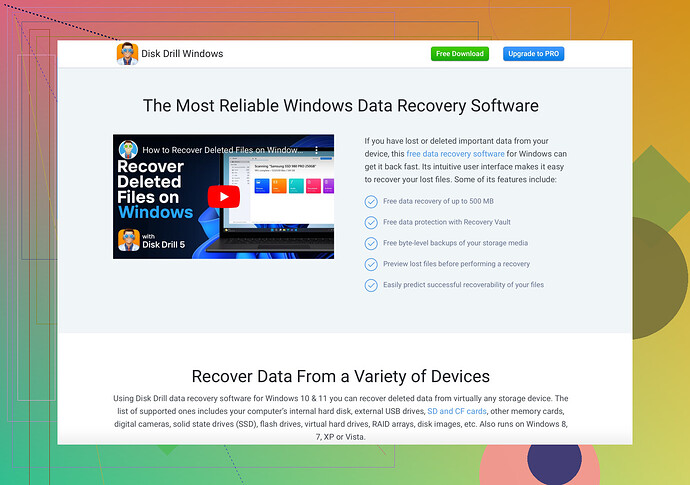My USB drive suddenly became corrupted and I can’t access my important work files stored on it. I tried plugging it into different computers, but it still doesn’t work. I desperately need those files for an upcoming deadline. Any help or suggestions on how to recover them?
First, don’t panic. There are a few things you can try to recover your files from a corrupted USB drive. Here’s a breakdown:
-
Check USB Port: You’ve already tried different computers, but it’s worth ensuring the port isn’t causing issues. Sometimes a different USB port helps.
-
Change Drive Letter: On Windows, you can use Disk Management (right-click Start > Disk Management) to change the drive letter of your USB. Sometimes just giving it a new letter can make it visible again.
-
Run CHKDSK: Open Command Prompt as an Admin and type
chkdsk [drive letter]: /f. This will scan for and fix file system errors, which might resolve the corruption. -
Use Recovery Software: Here, Disk Drill comes in handy. This software specializes in recovering data from corrupted drives. It’s intuitive and supports various file formats.
- Download Disk Drill from Disk Drill Data Recovery Software.
- Install and launch it.
- Select your corrupted USB from the list of available drives.
- Start the scan to look for recoverable files.
- Preview and recover the files you need.
-
Try Linux: Sometimes Windows can’t read corrupted drives that Linux can. Boot from a Linux live USB (Ubuntu is good). Sometimes you can access and copy your files to another device from there.
-
Professional Help: If none of the above methods work, you might need a professional data recovery service. This can be pricey, but if your data is irreplaceable, it’s a solid option.
Remember that manipulating or using the drive repeatedly might cause more damage to your files, so stick with proven methods and don’t continue stressing the drive unnecessarily.
Okay, it sounds like you’re in a bind. Here’s another set of strategies you might want to try:
-
Backup Before Anything Else: If you haven’t already, try to lodge your USB in another device but do not write any new data onto it. Any write operations could potentially overwrite the files you’re trying to recover.
-
Try Recuva: While Disk Drill is great, you might also want to give Recuva a shot. This software is also quite reputable for data recovery.
-
Boot into Safe Mode: Sometimes your operating system in its normal state might have conflicts that Safe Mode can bypass. Boot your computer into Safe Mode and attempt to access the USB drive again.
-
Command Prompt File Recovery: If CHKDSK didn’t work, you might want to try using the Command Prompt for a more manual approach:
- Open Command Prompt as an Admin.
- Type
diskpartand press Enter. - Type
list diskand press Enter. - Identify your USB drive from the list (it will look like
Disk X). - Type
select disk X(replace X with the number of your USB disk). - Type
detail diskto get more info - you might be able to manually navigate the drive from here.
-
Examine the Drive Using a Hex Editor: This is more hands-on and technical. Using a hex editor like HxD can let you inspect if your files are still physically present on the USB. Not for the faint-hearted but worth it if you’re tech-savvy.
-
DOS Boot Disk: Create a DOS boot disk and boot your PC from it. Once in DOS, use the
dircommand to see if the drive data is readable, and thecopycommand to recover files.
In some cases, using tools or methods multiple times increases success rates, but don’t stress the drive too much. Keep in mind that too many attempts may reduce the chances of recovery. The last resort should always be professional data recovery services, though they can be pricey.
To know more about a reliable data recovery software, check out Disk Drill - it’s designed to recover files from corrupted storage devices and is easy to use.
Hope you get those files back quickly!
